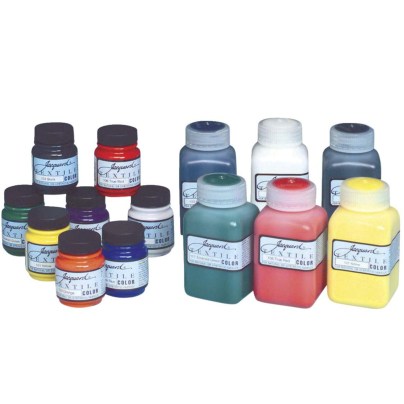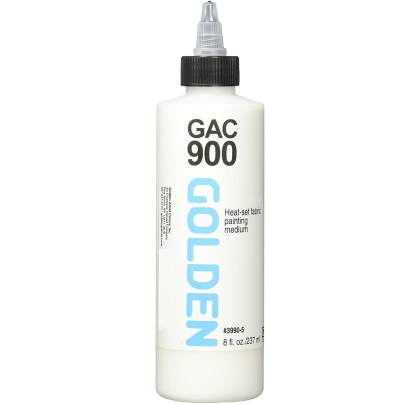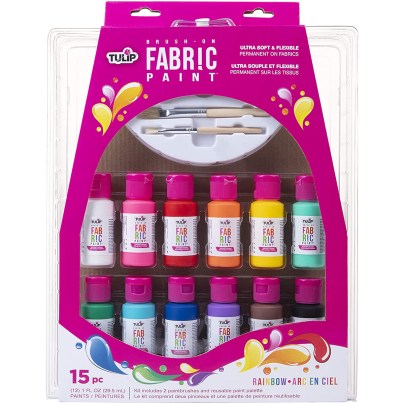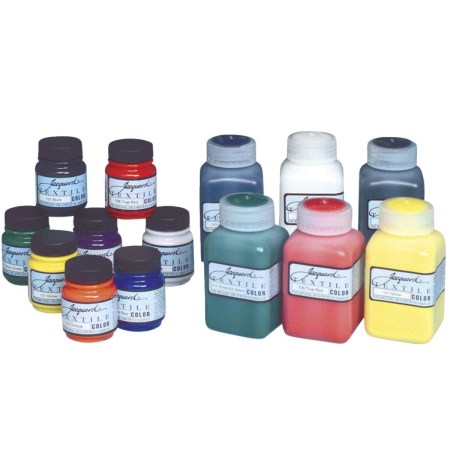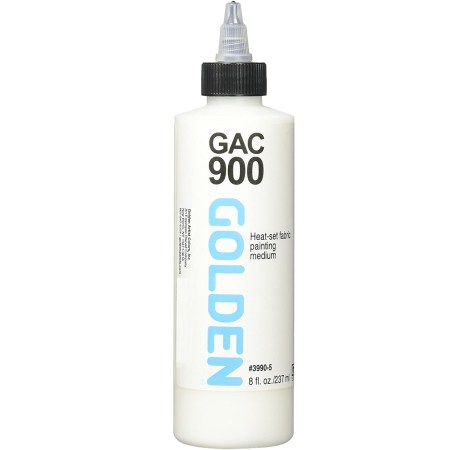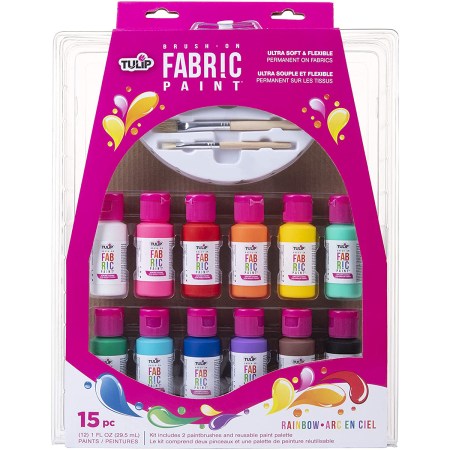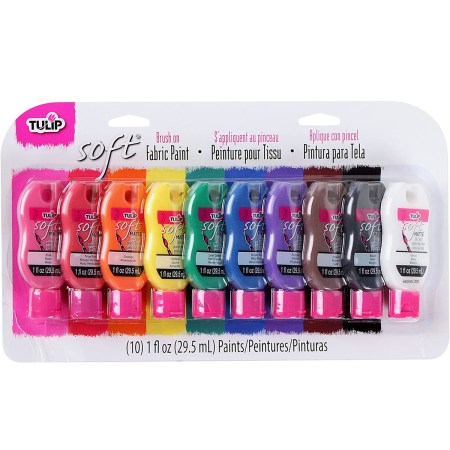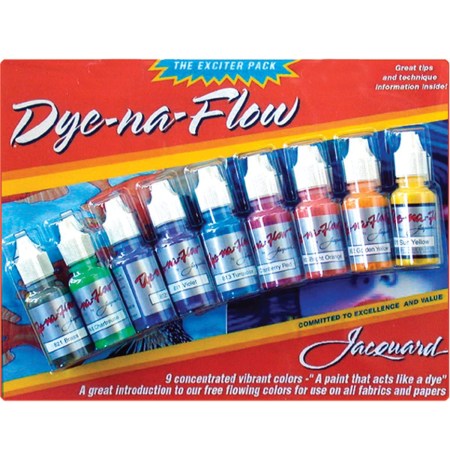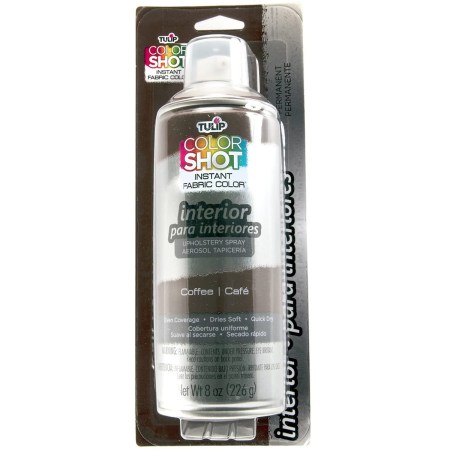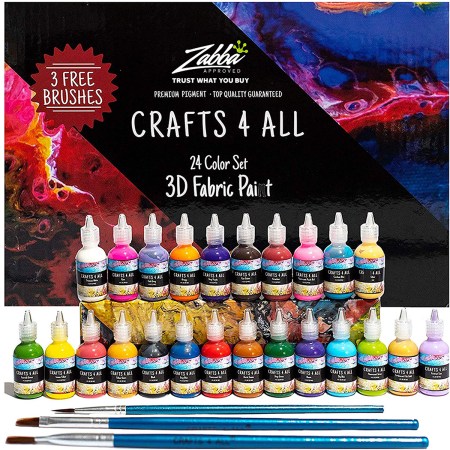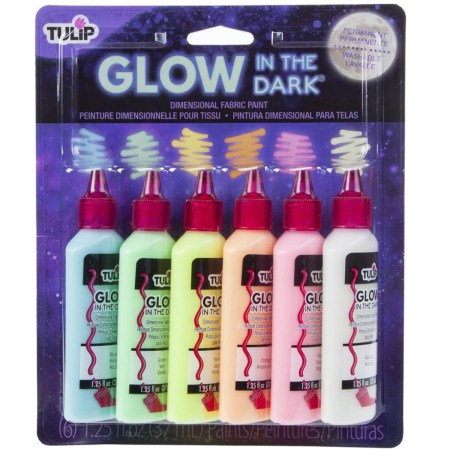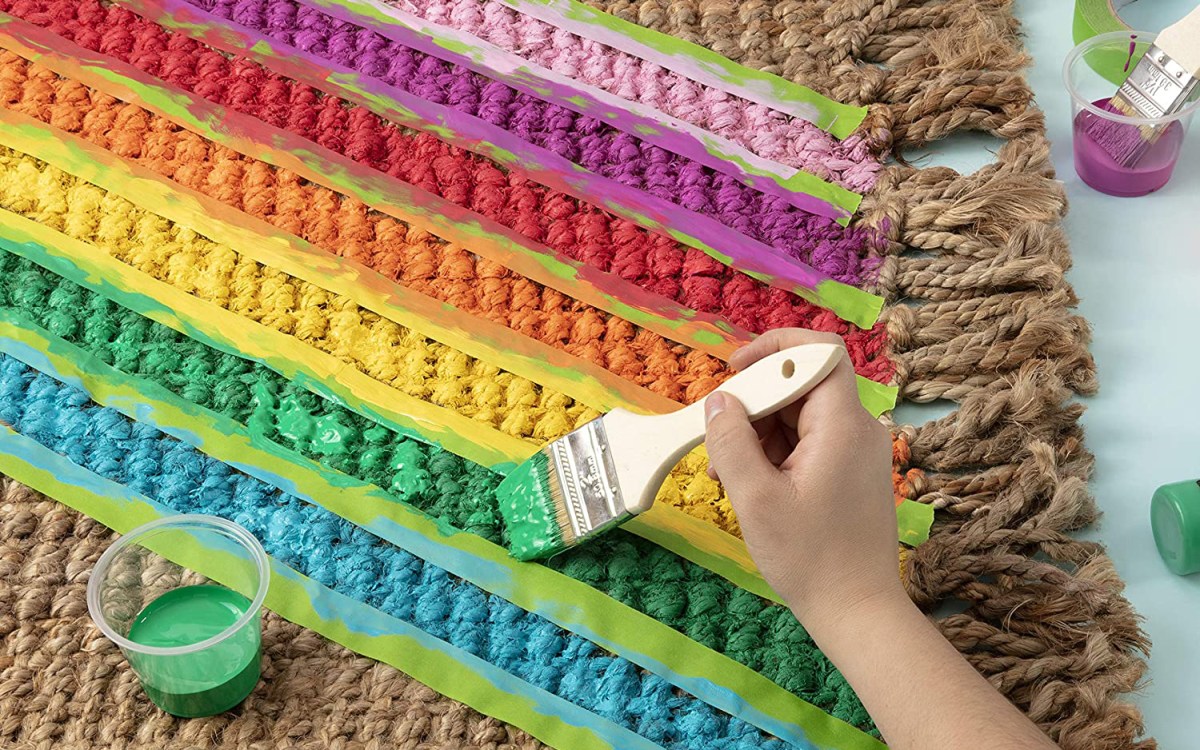
We may earn revenue from the products available on this page and participate in affiliate programs. Learn More ›
Fabric paints allow you to create personalized designs on clothing, upholstery, or any type of fabric. The paints are specially formulated to resist fading and stand up to laundering.
A dizzying array of colors and textures are available in fabric paints. When shopping, consider not only the color, but the application technique as well. Choose paint that’s compatible with both the project and the type of application. For example, a fine-tipped marker probably is not the best fabric paint for a large item like a bed sheet. This guide will help you find the option suitable for both the material and application you plan to use.
- BEST OVERALL: Jacquard Products JAC1000 Textile Color Fabric Paint
- BEST BANG FOR THE BUCK: Golden Artist Colors Acrylic Series Gac 900 Medium
- BEST FOR DENIM: Tulip 40573 Palette Kit Brush-On Paint, 15 Piece
- BEST FOR T-SHIRTS: Tulip Soft Fabric Paint Kits – 10pk Rainbow
- BEST FOR SYNTHETICS: Jacquard JAC9908 Dye-Na-Flow Exciter
- BEST FOR UPHOLSTERY: Tulip ColorShot Instant Fabric Color Interior Spray
- BEST 3D FABRIC PAINT: Crafts 4 All Fabric Paint 3D Permanent 24 Colors Set
- BEST GLOW IN THE DARK: Tulip Dimensional Glow Fabric Paint
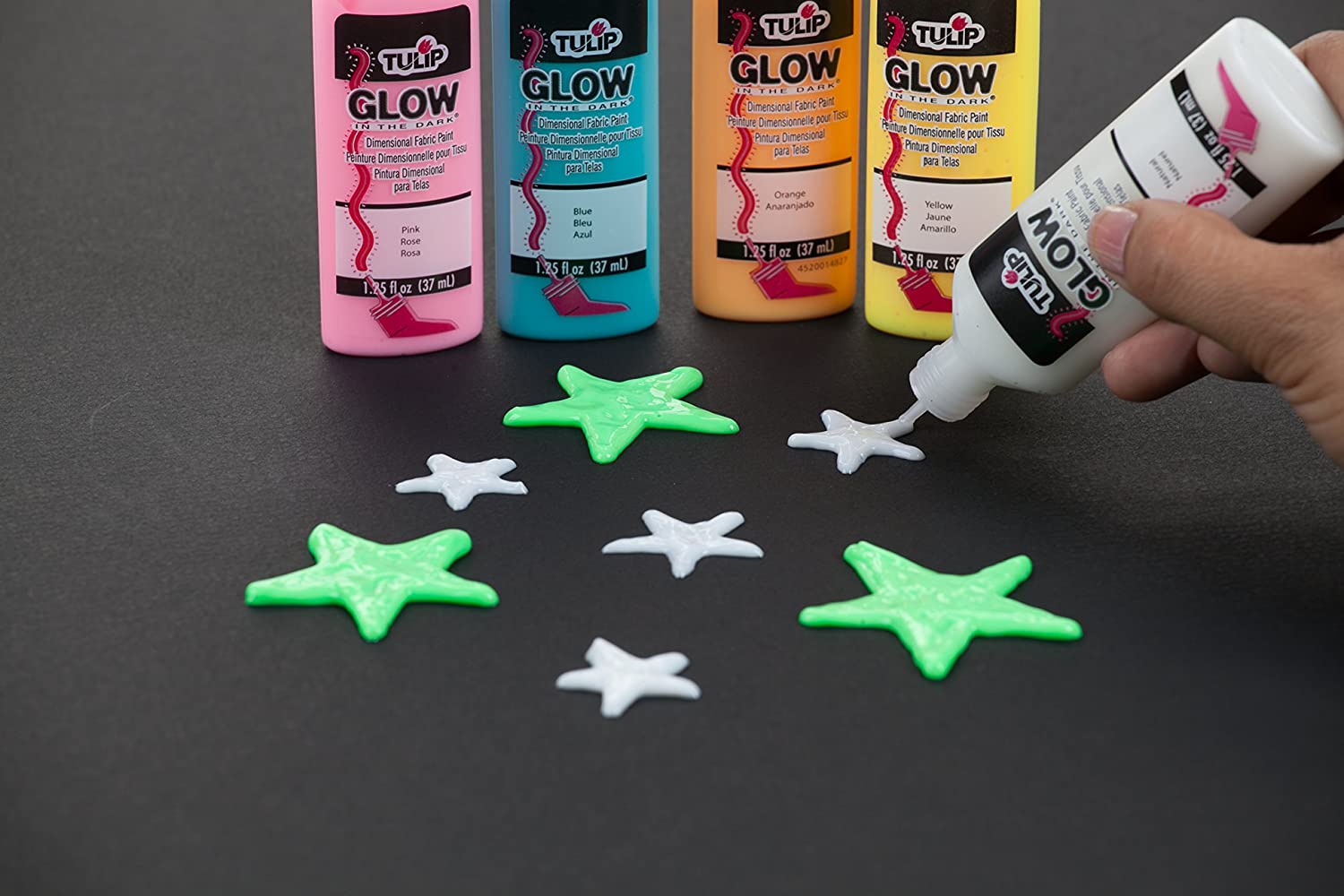
Types of Fabric Paint
Fabric paint, also known as textile paint, comes in several forms, each with strengths and weaknesses. Fabric paint is classified by its base: acrylic, alcohol, or dye. The best fabric paint for a project depends on the type of fabric used and the overall look you are trying to achieve.
Acrylic Based
Acrylic-based paint, which is the most common form of fabric paint, is inexpensive and comes in an array of colors. The paints are available in liquid, spray, pen, or marker form. Acrylic fabric paints are created by adding color pigment to an acrylic polymer, which is then emulsified with water to create the paint. When it dries, this kind of paint forms a durable bond with most fabrics, and it’s fairly fade resistant.
Acrylic-based fabric paints are water soluble when wet, which means the paint’s viscosity changes with the addition of water without affecting its color saturation. Acrylic-based paints are easy to work with and usually provide consistent results.
Alcohol Based
Technically, an alcohol-based pigment for fabric is an ink, not a paint. Alcohol is used as a binder to deliver the pigment to the medium. Alcohol-based pigments are not commonly used to “paint” fabric because they can soak into fabric’s porous fibers. They can’t saturate color like acrylic-based fabric paints.
Alcohol-based pigments work well in pale or tie-dye applications of color to fabric. Layers of paint help deepen colors on light fabrics; however, they usually yield unsatisfactory results on darker fabrics. Fabrics decorated with alcohol-based inks are not washable unless sealed with a protective finish.
Fabric Dye
Unlike acrylic-based fabric dyes, fabric dyes are designed to chemically react with fibers to form a chemical bond to alter the colors of the fabric. Apply a fabric dye much like an alcohol-based ink. Fabric dyes are formulated for specific types of fabrics. Using a dye not made for a particular type of fabric usually yields a poor result.
Fabric dyes are most often used in tie-dye or when changing the color of a large garment. Applying fabric dye is a multi-step process. Before the application of the dye, the fabric is usually prepared with a pre-soak or wash. Heat or multiple rinses are typically required to set the dye. When using dye, cleanup is more difficult.
What to Consider When Choosing the Best Fabric Paint
Most people use acrylic-based fabric paints to add color and designs to clothing, shoes, or household textiles. With acrylic paints, consider the features of the paint before you choose the paint for a specific project. Once you understand acrylic’s form and consistency, how the paint works on different fabrics, and how it’s applied, you can select the right fabric paint for any application.
Fabric Type
Fabric paints are available that work on virtually any type of fabric. However, the fabric’s color and texture determine the form and consistency of the paint that will work best on it.
Fabrics with an even, tight weave, such as cotton, denim, silk, and cotton-polyester blends, usually yield the best results in fabric painting. Fabric paints look more vivid against white material or pale colors. If painting dark fabric, use light hues, neon, or special-effects paints, such as those that contain glitter or have dimensional or “puffy paint” finishes.
Transparency and Consistency
The best paint for your project depends on the type of fabric and its color. Fabric paints range from transparent to opaque. Opaque fabric paints work best on dark-colored fabrics, because they’re thicker and the fabric won’t absorb them as quickly. For light-colored fabrics, use either transparent or opaque colors, but opaque colors are more saturated.
Water and other additives change the consistency and opacity of acrylic fabric paint and thin its viscosity. Thin inks and dyes with the additives recommended by the paint manufacturer.
Form
Fabric paints are available in three forms: liquid, spray, and markers or pens.
- Liquid, the most popular type of fabric paint, comes in bottles that often are sold in multi-color sets. Some bottles have tips that allow the user to apply the paint directly to the fabric with the tip. Use a paintbrush to apply fabric paint or thin it to use in an airbrush system. Liquid paint is best for block printing or silk screening applications. Additives alter the consistency of the paint, particularly when silk screening.
- Spray fabric paints look similar to cans of regular spray paint, but they’re specially formulated to use on fabric. Use these paints to cover large areas, not for small, detailed applications. Spray paints are best for upholstery or stenciling applications.
- Use a marker or pen to apply fine details. Either alcohol- or acrylic-based, markers and pens are portable and convenient to use, but they can’t cover a lot of fabric. Use them for drawing, writing, or precise line work. They’re not designed to cover large areas or to deposit supersaturated color.
Application
Craftspeople can use a variety of ways to apply paints and inks to textiles, depending on the form of the paint and the fabric.
- A brush is the most common way to apply acrylic-based liquid paint to fabrics. Simply squeeze the paint onto a palette and use a craft brush to apply it to prepared fabric.
- Use the narrow tip applicators on tubes or bottles of dimensional paint to apply the paint, which dries to a raised, puffy finish. These paints are ideal for outlining shapes or writing on fabric.
- Airbrush applications are designed to cover larger areas, but they also can be used for details. Liquid fabric paints used for airbrushing are altered with an additive to change the paint’s consistency.
Fabric Medium
Fabric medium is an additive used to improve the workability of acrylics on textiles. It helps fabric paints adhere to the fabric better, stay malleable longer, and penetrate the fabric evenly. Fabric medium also improves flexibility and reduces the stiffness of dry paint. This additive works only with acrylic-based paints. However, it can transform any acrylic-based paint into fabric paint.
Some additional benefits of using a fabric medium include:
- Controls color bleeding
- Lowers the viscosity of thicker paints
- Makes paint consistently even
- Improves blending of the paint when wet
- No heat-setting required
- Colorfast and machine washable
Our Top Picks
The following recommendations take into account all these considerations, including form, fabric type, application method, and the paint’s base. This list features a variety of some of the best fabric paints available.
Best Overall
Jacquard Products JAC1000 Textile Color Fabric Paint
For more than 35 years, Jacquard Products has been the leading manufacturer of artist materials for fabric. The company produces an extensive range of fabric paints, dyes, and inks suitable for both natural and synthetic fabrics as well as wood and leather. Their textile color line is relatively affordable and versatile.
This acrylic-based paint doesn’t chip, crack, or peel, even with repeated wear and washing. The paint can be applied straight from the bottle, and the colors are semitransparent and intense. Crafters may add water to the paint (up to 25 percent to volume) to increase transparency and reduce viscosity.
This set of eight paints features both primary and secondary colors, plus black and white. The colors can be mixed and matched to create other shades. The paint is suitable for a variety of application techniques, including brush painting, block-printing, stenciling, stamping, and airbrushing (when thinned with water).
Best Bang For the Buck
Golden Artist Colors Acrylic Series Gac 900 Medium
When using a fabric medium, there’s no need to purchase a special fabric paint. This additive transforms acrylic-based paint into a durable and colorfast fabric paint. This product is a cost-effective way to use paints already on hand. Golden Artist Colors heat-set fabric painting medium improves both the consistency of paint and its color penetration into the fabric.
The medium also can be used to thin heavy body paints to use in a paint sprayer and improve the viscosity of fabric paint. Its base is white, but it dries clear and won’t alter the acrylic paint’s pigment. When added to an acrylic paint, the painted fabric must be heat-set in a dryer or with an iron to make the paint permanent.
Best For Denim
Tulip 40573 Palette Kit Brush-On Paint, 15 Piece
On denim, fabric paint must be opaque and vibrant to be visible. Moreover, the paint also needs to be flexible, so it won’t crack or crumble when used on your favorite jeans or denim jacket. TULIP’s paint palette kit works well on heavier, coarser fabrics.
TULIP sells a wide range of fabric paints. This Palette Kit features 15 vibrant, mixable colors designed for brushing, stamping, or stenciling. This paint can be applied in layers to deepen the hue without losing flexibility. The paint becomes permanent and washable on fabrics 72 hours after application, and it dries to an ultra-soft, flexible finish.
Best For T-Shirts
Tulip Soft Fabric Paint Kits – 10pk Rainbow
Because T-shirt fabric is so thin, craftspeople need a flexible fabric paint that won’t crack or crumble off once dry. TULIP’s soft fabric paint dries to a soft finish that won’t crumble or flake.
The 10-piece kit includes primary and secondary colors as well as black, white, and brown. The paints are suitable for brush, sponge, stamp, and stencil applications. TULIP paints can be used on any color fabric, and they don’t require heat to set the paint.
Though these paint colors are opaque, several layers of fabric paint can be applied to achieve the desired color saturation on darker fabrics. Mix the paint to create custom hues.
Best For Synthetics
Jacquard JAC9908 Dye-Na-Flow Exciter
Applying fabric paints to synthetic fabrics such as polyester, acrylic, and spandex is tricky. Synthetics vary greatly in their chemical composition. Many fabric paints cannot penetrate the fibers of the fabric, which is why dyes are often used instead of paint on synthetics.
Technically, Jacquard Dye-Na-Flow is not a dye; instead, it’s a transparent liquid fabric paint that simulates a dye. The product soaks into the fibers like a dye instead of sitting on the surface of a fabric like thicker paints and inks. The colors are vibrant and colorfast, and, most importantly, Dye-Na-Flow doesn’t change the feel of the fabric.
This fluid acrylic is used in a diverse range of applications, including brush painting, airbrushing, resist techniques, and stenciling. It’s suitable for almost any natural or synthetic fabric. The paint requires a heat-set to make it colorfast.
Best For Upholstery
Tulip ColorShot Instant Fabric Color Interior Spray
Sometimes, your furniture fabric needs a little facelift but not a complete reupholstery job. TULIP’s ColorShot interior upholstery spray is formulated to work on both natural and synthetic fabrics. Its richly pigmented color provides thorough coverage and dries quickly and soft to the touch.
The spray can, which is designed to reduce hand fatigue, applies an even layer of pigment with no drips or splatters. The paint covers fabric without obscuring the upholstery’s weave or rubbing off on clothing. Each can covers a square yard of surface area.
The paint is available in eight colors, mostly in subdued tints to match popular upholstery colors. Also use TULIP ColorShot on fabric accessories or clothing. For best results, the manufacturer recommends applying the paint in several light layers rather than one thick coat.
Best 3D Fabric Paint
Crafts 4 All Fabric Paint 3D Permanent 24 Colors Set
This versatile and inexpensive set of 3D fabric paints from Crafts 4 All are perfect for both adult and child crafters. These odorless, non-toxic paints are easy to apply with their squeeze-bottle container and narrow tip applicator. Use this paint for lettering or outlining shapes on many types of fabric.
Crafts 4 All 3D paints also work on wood, paper, ceramic, glass, and canvas—not just fabric. To achieve a 3D effect, apply the paint straight from the bottle. For a two-dimensional look, brush the paint on like acrylic paint. This Crafts 4 All paint will not crack or peel, and it doesn’t require heat to set.
Best Glow in the Dark
Tulip Dimensional Glow Fabric Paint
These TULIP fabric paints are dimensional, or “puffy,” and glow in the dark. The paints, packaged in squeeze bottles with applicator tips, are easy to apply. They also can be applied with a paintbrush.
This set of six neon-colored paints is suitable for a wide variety of fabrics and other surfaces, such as paper, glass, ceramics, metals, and more. When applied to fabric, the paint is permanent after it dries, and it’s both colorfast and washable.
These paints glow best under ultraviolet or black lights, but they also stand out fairly well in daylight. TULIP’s Dimensional Glow Fabric Paint is nontoxic and odorless, making it a craft medium suitable for kids of all ages.
Tips for Using Fabric Paint
Fabric paint is easy to use and fairly foolproof. To get the best results, however, use some tips and tricks when you paint. Fabric paints work best on tightly woven fabrics like cotton. You can paint practically any type of fabric, but loose-weave fabrics like burlap typically don’t get good results.
Even if it’s new, prewash the fabric before painting it. New fabrics often contain sizing that adds body; however, this substance can prevent paint from penetrating fabric fibers. Also skip the fabric softener and dryer sheets; they can reduce paint absorption.
To help prevent paints from bleeding through fabrics, place cardboard between the layers of fabric while painting. The extra layer also helps protect your work surface. Finally, follow the manufacturer’s directions for setting the paint. Some fabric paints don’t require a heat-set to make the paint permanent, but they may need to dry up to 72 hours before laundering the fabric.
- Wash and dry the fabric before applying the paint.
- Don’t use fabric softener or dryer sheets when preparing the fabric.
- Use a piece of cardboard or heavy paper between layers of fabric to prevent any bleed-through of paint.
- Follow the manufacturer’s directions for setting the paint.
FAQ About Your New Fabric Paint
Now that you’ve learned the basic features of fabric paints, you may still have a few questions. Keep reading to find some of the most frequently asked questions and answers about fabric paint.
Q. How do you prepare for fabric painting?
Launder and dry your fabric before painting. Don’t use fabric softener because it prevents paint from penetrating evenly into the fabric.
Q. How do you seal acrylic paint on fabric?
Follow the paint manufacturer’s recommendation for heat-setting the paint. Most acrylic-based fabric paint manufacturers recommend allowing the painted fabric to dry for several hours before applying heat with an iron or a clothes dryer.
Q. How long does fabric paint take to dry?
Drying time depends on the type of paint used, the fabric, the paint application, and the humidity in the workspace. Paint manufacturers usually add average drying times to the package label. Most fabric paints dry to the touch in 5 minutes to 2 hours.
